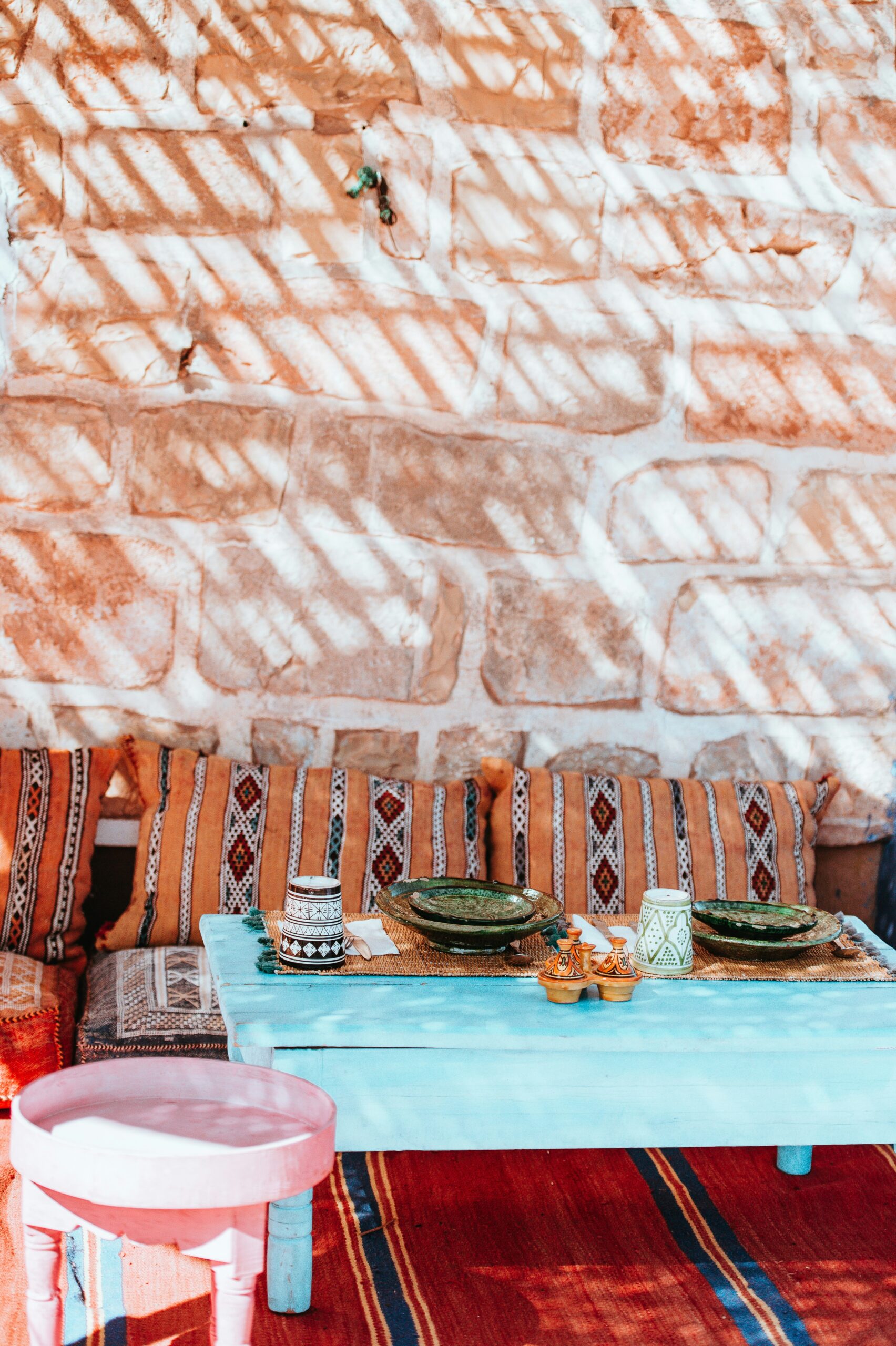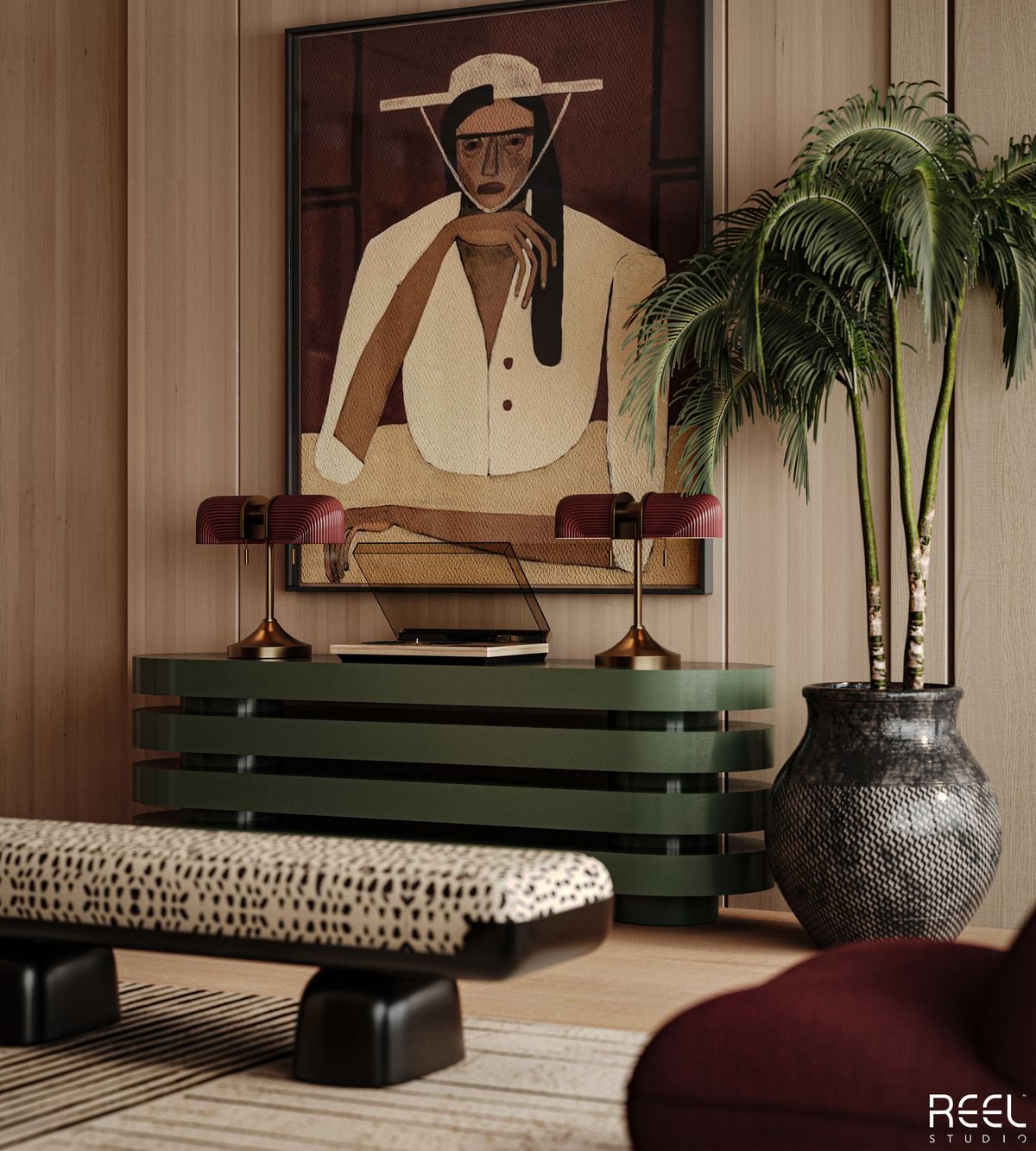
Originating from an amazing continent of diverse cultures, I feel an intrinsic connection to the vibrancy of African Architecture.
African architecture is a treasure trove of creativity, blending ancient traditions with modern innovation in ways that are both exciting and awe-inspiring. In my design studio, I’ve drawn immense inspiration from these traditional African elements. My goal is to create spaces that not only look stunning but also tell a story and resonate with their users.
Join me as we explore how these timeless African architectural styles influence modern design, creating environments that are warm, character-filled, and uniquely yours.
The Essence of African Architecture
A Fusion of Tradition and Modernism
African architecture is an enchanting blend of tradition and modernity. It draws from ancient building techniques, materials, and cultural expressions while incorporating contemporary innovations.
This fusion creates unique structures that are not only purposeful but also deeply rooted in cultural heritage. From the mud-brick houses of Mali to the high-rise buildings of Johannesburg, African architecture showcases a vast range of styles and influences.
The Influence of African Architecture on Modern Design
Modern architects and interior designers, including those working in cosmopolitan cities like London, are increasingly drawing inspiration from African architectural styles.
The use of naturally sourced materials, sustainable building practices, and vibrant aesthetics of African design are being integrated into modern interiors and exteriors, creating spaces that are both good-looking and environmentally conscious.
Traditional African Architectural Styles
The Vernacular Architecture of Africa
Vernacular architecture in Africa is as diverse as the continent itself. It is characterized by the use of locally sourced materials and traditional construction techniques passed down through generations. These amazing structures are designed to suit the local climate, available materials, and cultural needs.
- Mud-Brick Architecture
In West Africa, particularly in Mali, mud-brick architecture is prominent.
The Great Mosque of Djenné, a UNESCO World Heritage site, is a stunning example of this style. Built entirely from sun-baked earth bricks, this structure represents the ingenuity of African builders who used natural resources to create monumental architecture.
Picture Credits: This is Africa
- Thatch and Timber
In regions like Eastern and Southern Africa, thatch and timber are commonly used in traditional buildings.
The rondavel, a round hut with a conical thatched roof, is a quintessential example. These structures are not only aesthetically pleasing but also environmentally sustainable, providing excellent insulation against the elements.
Picture Credits: University of Bristol
The Role of Ornamentation and Symbolism
African architecture is opulent in ornamentation and symbolism. Intricate carvings, colourful murals, and symbolic motifs are often used to decorate buildings. These elements convey cultural stories, beliefs, and social status
Picture Credits: Amusing Planet
For instance, the Ndebele houses in South Africa are famous for their vibrant geometric patterns, each with a specific meaning and purpose.
Picture Credits: INSinsideDE
Innovation in African Architecture
Contemporary Innovations
Contemporary African architecture is pushing the boundaries of design, creating innovative structures that reflect the continent’s dynamic spirit. Modern architects blend traditional elements with modern techniques, addressing contemporary challenges such as urbanization, sustainability, and climate change.
Sustainable Practices in African Architecture
Sustainability is a cornerstone of African architectural innovation. The use of renewable materials with energy-efficient designs, and green building practices are prevalent across the continent.
- Earth Architecture
Earth architecture, using materials like clay, sand, and straw, is gaining popularity due to its environmental benefits. These materials are abundant, cost-effective, and provide natural insulation, lessening the need for artificial heating and cooling.
- Green Roofs and Urban Gardens
In urban areas, green roofs and urban gardens are being integrated into architectural designs to combat the heat island effect and promote biodiversity. These green spaces also provide urban dwellers with access to nature, enhancing their quality of life.
The Influence of African Architecture on Modern Interior Design
Integrating African Elements into Modern Interiors
Interior design plays a fundamental role in bringing African architectural styles to life. By incorporating traditional African elements into modern interiors, designers create places that are both visually stunning and culturally meaningful.
- Use of Natural Materials
Natural materials such as wood, textiles, and ceramics are central to African-inspired interior design. These materials not only extend warmth and texture to a space but also reflect the theme of sustainability.
- Earth Tones and Natural Textures
African interior design often features a palette dominated by earth tones, including browns, tans, and greens. These colours, combined with natural textures, create a serene and grounding atmosphere. The use of woven textiles, wooden furniture, and handcrafted ceramics adds depth and character to the space.
Picture Credits: Sonae Arauco
Symbolism and Artistic Expressions
Incorporating African art and decor into interiors is a powerful way to celebrate the continent’s rich cultural heritage. Sculptures, paintings, and weavings add character and a sense of identity to a space. They serve as focal points, sparking cordial conversations and evoking a deep connection to African traditions.
- Geometric Patterns and Bold Colours
African interior design often features geometric patterns and bold colours that draw inspiration from traditional textiles and art. These patterns can be integrated into upholstery, rugs, and wall art, creating a vibrant and dynamic environment.
Photo Credits: Ndebele Themed Lounge
Functional and Sustainable Design
The principles of African architecture, with its emphasis on functionality and sustainability, are increasingly influencing modern interior design practices.
- Space Utilization and Multipurpose Furniture
African design often emphasizes efficient space utilization and multifunctional furniture. This approach is particularly relevant in urban living settings where space is limited. Furniture pieces that serve numerous purposes, such as storage benches and foldable tables, are both practical and stylish.
- Eco-Friendly Materials and Practices
Sustainability is a key aspect of African-inspired interior design. Using eco-friendly materials and sustainable practices, such as repurposing old furniture and incorporating plants, not only lowers the environmental impact but also enhances the aesthetic appeal of the space.
Exploring African architectural styles is a journey through tradition and innovation. From ancient mud-brick structures to cutting-edge sustainable designs, African architecture offers a wealth of inspiration for modern designers and architects.
+ view the comments


